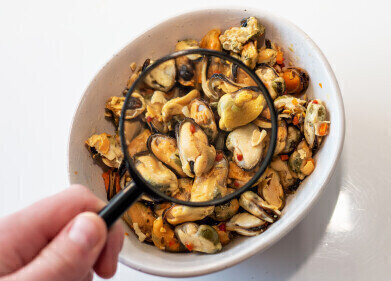GC-MS
How Do Cocoa Beans Vary by Region? - Chromatography Explores
Aug 12 2019
We all love chocolate. Plain or flavoured, on its own or full of fruit and nuts. White, milk and plain. All chocolate starts with cacao beans, which are then processed and packaged into the bars we love to eat. Most of us don’t give too much thought to the cacao beans that are the prime ingredient of chocolate. But, just like those other beans that seem to form an essential role in our lives, coffee beans, not all cacao beans taste the same. In fact, just like coffee beans, climate and terrain play a large role in the flavours developed in cacao beans. And chromatography is the key technique used to tease out the different flavour profiles.
Cocoa beans - full of flavours
Cacao refers to the tree and products made from raw non-roasted seeds of the tree Theobroma cacao. When we roast the seeds or beans, we get cocoa products like cocoa butter and cocoa powder. The raw chocolate bars in health food stores probably contain cacao, the chocolate bars we buy when we need something comforting are made from cocoa products.
Most of the cacao used for bulk chocolate production is produced in West Africa, with finer cacao products made from cacao from Latin America - the original home of cacao beans. Cacao beans undergo three main stages in the process of making cocoa - fermentation, drying and roasting. And fermentation is considered a key step in forming flavour precursors - with fermentation time a key factor in development of aroma compounds.
Regional variations in flavour - chromatography sniffs them out
A recent study by researchers in Italy has investigated the differences in flavour profiles for cocoa bean shells from different regions and cultivars. The work - published in the journal Food Research International under the title Assessment of volatile fingerprint by HS-SPME/GC-qMS and E-nose for the classification of cocoa bean shells using chemometrics - used gas chromatography to identify and fingerprint over 100 different volatile compounds from 44 different cocoa bean shells.
The researchers first extracted the volatile compounds using headspace microextraction. The use of headspace analysis to analyse flavours is discussed in the article, Rapid Determination of Strawberry Flavour Integrity using Static Headspace-Selected Ion Flow Tube Mass Spectrometry. After extraction, the samples were analysed using gas chromatography-mass spectrometry.
The researchers identified aldehydes, ketones, alcohols and acids in the samples and were able to identify a few key biomarkers that would be suitable for a bean’s quality and origin - namely 2-hepanol, 2-methylpropanoic acid, and 2,3,5-trimethylpyrazine. The authors state that GC-qMS is a suitable technique for the analysis and classification of cocoa bean shells with reference to their origin and quality.
Digital Edition
Chromatography Today - Buyers' Guide 2022
October 2023
In This Edition Modern & Practical Applications - Accelerating ADC Development with Mass Spectrometry - Implementing High-Resolution Ion Mobility into Peptide Mapping Workflows Chromatogr...
View all digital editions
Events
Apr 28 2024 Montreal, Quebec, Canada
May 05 2024 Seville, Spain
May 15 2024 Birmingham, UK
May 19 2024 Brno, Czech Republic
May 21 2024 Lagos, Nigeria














